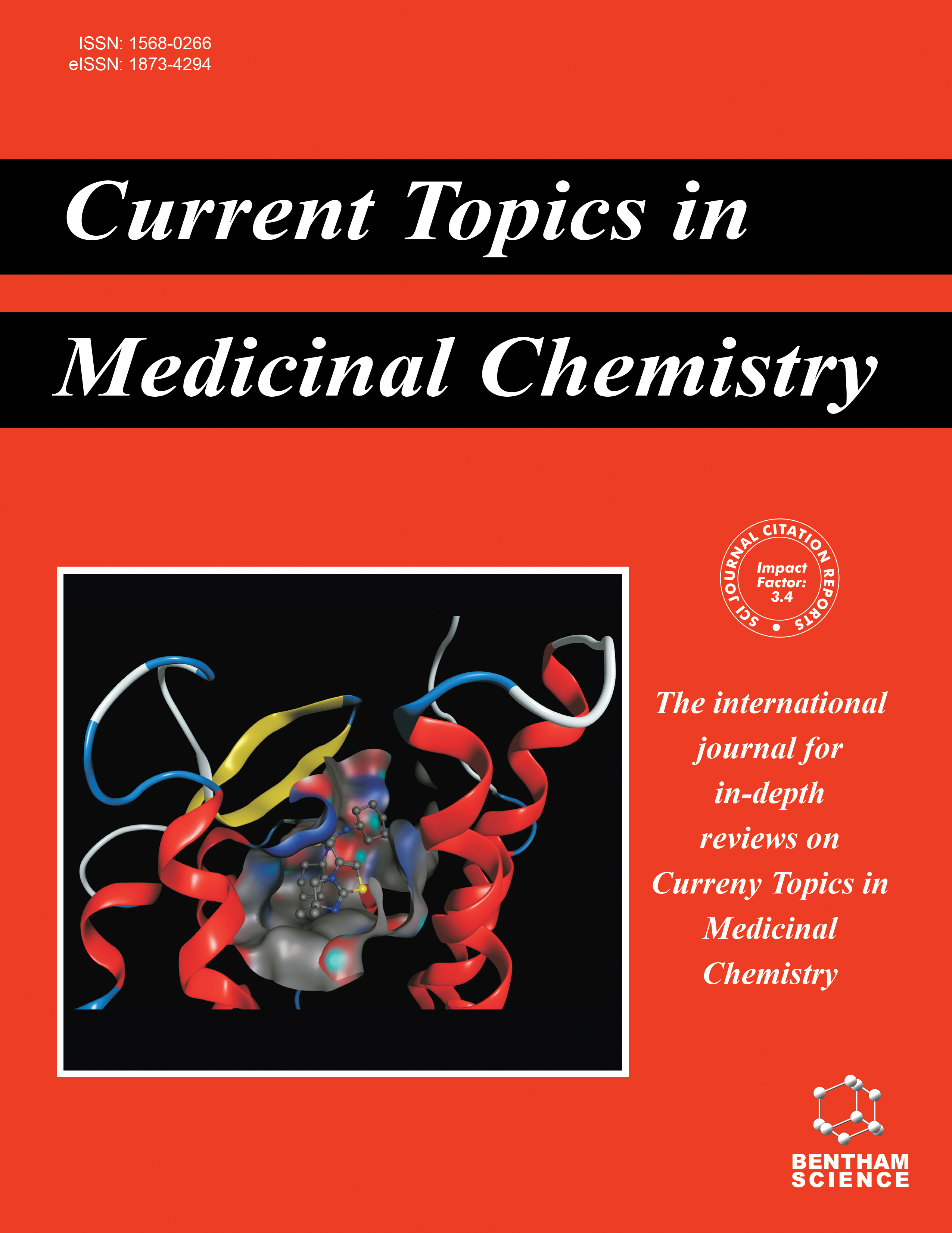- Home
- A-Z Publications
- Current Topics in Medicinal Chemistry
- Previous Issues
- Volume 12, Issue 19, 2012
Current Topics in Medicinal Chemistry - Volume 12, Issue 19, 2012
Volume 12, Issue 19, 2012
-
-
Docking, Synthesis and Anti-Diabetic Activity of Novel Sulfonylhydrazone Derivatives Designed as PPAR-Gamma Agonists
More LessDiabetes is a metabolic disorder characterized by hyperglycemia. When not properly controlled, complications include neuropathy, coronary artery disease, and renal failure. Several drugs are approved for diabetes treatment; however their use is associated with side effects and lack of efficacy in attenuating the development of long-term complications. This work describes the virtual screening and synthesis of a novel series of s Read More
-
-
-
Acylhydrazones Contribute to Serum Glucose Homeostasis Through Dual Physiological Targets
More LessIn this study the in vivo and in vitro antidiabetic effects of four acylhydrazone derivatives were investigated in rats. The secretagogue action, oral glucose tolerance, insulinogenic index and mechanism of action of these acylhydrazones in relation to calcium uptake in pancreatic islets were studied. Also, the insulinomimetic effect on glycemia in diabetic rats was verified. Of the acylhydrazones studied, 1 and 4 were able to in Read More
-
-
-
Estrogen Receptor 1 Agonist PPT Stimulates Slc2a4 Gene Expression and Improves Insulin-Induced Glucose Uptake in Adipocytes
More LessAuthors: R. S. Campello, A. B. Alves-Wagner, T. F. Lucas, R. C. Mori, D. T. Furuya, C. S. Porto and U. F. MachadoType 2 diabetes mellitus is characterized by disruption in glycemic homeostasis, involving impaired insulininduced glucose disposal. For that, reduced glucose transporter GLUT4, encoded by Slc2a4 gene, plays a fundamental role. Conversely, increase in Slc2a4/GLUT4 expression improves glycemic homeostasis. Recent studies have proposed that estradiol is able to modulate Slc2a4 expression, according to distinct effects u Read More
-
-
-
The Central Nervous System as a Promising Target to Treat Diabetes Mellitus
More LessMost of the drugs available to treat type 2 diabetes mellitus (T2DM) act either in the pancreas by increasing insulin secretion or in tissues such as the liver or muscle by improving insulin sensitivity. However, recent studies have shown that the brain also plays a critical role in the regulation of glucose homeostasis. For example, central leptin administration reduces hyperglycemia and improves the survival of mice with type 1 di Read More
-
-
-
Equinatoxin II Potentiates Temozolomide- and Etoposide-Induced Glioblastoma Cell Death
More LessAuthors: Suzana Assad Kahn, Deborah Biasoli, Celina Garcia, Luiz Henrique M. Geraldo, Bruno Pontes, Morgana Sobrinho, Ana Carina Bon Frauches, Luciana Romao, Rossana C. Soletti, Fernando dos Santos Assuncao, Fernanda Tovar-Moll, Jorge Marcondes de Souza, Flavia R.S. Lima, Gregor Anderluh and Vivaldo Moura-NetoGlioblastoma (GBM) is considered incurable due to its resistance to current cancer treatments. So far, all clinically available alternatives for treating GBM are limited, evoking the development of novel treatment strategies that can more effectively manage these tumors. Extensive effort is being dedicated to characterize the molecular basis of GBM resistance to chemotherapy and to explore novel therapeutic procedures that ma Read More
-
-
-
Biological Evaluation of 3-Acyl-2-Arylamino-1,4-Naphthoquinones as Inhibitors of Hsp90 Chaperoning Function
More LessHsp90 is a chaperone that plays a key function in cancer cells by stabilizing proteins responsible of cell growth and survival. Disruption of the Hsp90 chaperone machinery leads to the proteasomal degradation of its client proteins. Hsp90 appears then as an attractive target for the development of new anticancer molecules. We have shown that ascorbate- driven menadione-redox cycling inhibits Hsp90 activity by provoking an N- Read More
-
-
-
Effects of Natural Compounds on Xenopus Embryogenesis: A Potential Read Out for Functional Drug Discovery Targeting Wnt/β-catenin Signaling
More LessMaternal Wnt/β-Catenin signaling is essential to establish dorsal-specific gene expression required for axial patterning in Xenopus. Deregulation of this pathway causes axis phenotypes in frog embryos. In adult life, mutations in the Wnt pathway components are associated with many diseases, such as polyposis coli; osteoporosispseudoglioma syndrome (OPPG); skeletal dysplasia; neural tube defects, cancer and many others. Th Read More
-
Volumes & issues
-
Volume 25 (2025)
-
Volume 24 (2024)
-
Volume 23 (2023)
-
Volume 22 (2022)
-
Volume 21 (2021)
-
Volume 20 (2020)
-
Volume 19 (2019)
-
Volume 18 (2018)
-
Volume 17 (2017)
-
Volume 16 (2016)
-
Volume 15 (2015)
-
Volume 14 (2014)
-
Volume 13 (2013)
-
Volume 12 (2012)
-
Volume 11 (2011)
-
Volume 10 (2010)
-
Volume 9 (2009)
-
Volume 8 (2008)
-
Volume 7 (2007)
-
Volume 6 (2006)
-
Volume 5 (2005)
-
Volume 4 (2004)
-
Volume 3 (2003)
-
Volume 2 (2002)
-
Volume 1 (2001)
Most Read This Month
Article
content/journals/ctmc
Journal
10
5
false
en


